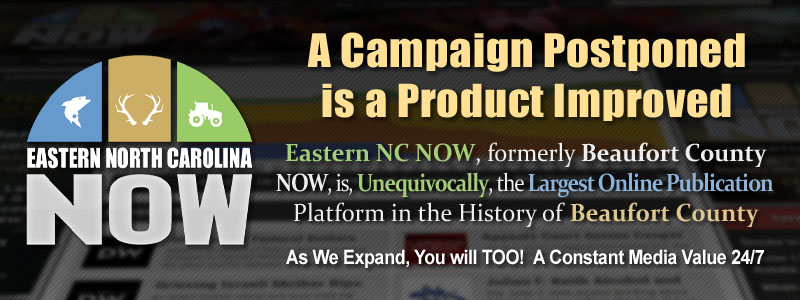Press Release:
James S. Brady Press Briefing Room • Washington D.C. • March 9 • 1:31 P.M. EST
MS. PSAKI: Hi, everyone. Hello.
Q: Hello.
MS. PSAKI: Joining us today is Bharat Ramamurti, the Deputy Director of the National Economic Council for Financial Reform and Consumer Protection.
Bharat was formerly the Managing Director of the Corporate Power Program at the Roosevelt Institute. He also served on the Congressional Oversight Commission for the CARES Act, a position he was appointed to by Senate Majority Leader Chuck Schumer last year. Previously, Bharat was the top economic adviser to Senator Elizabeth Warren during her 2020 presidential campaign and Senior Counsel for Banking and Economic Policy in her Senate office.
He will give you some brief — deliver some brief remarks, take a few questions. And thank you so much for joining us.
MR. RAMAMURTI: Good afternoon. Earlier today, the President had the chance to visit a couple of small businesses here in town. One is a locally owned hardware store that's been around for 150 years. The other, which leases part of the same space, is an urban farm that was founded just eight years ago.
Like other small businesses across the country, these companies help serve their communities. The hardware store sponsors Little League teams and holds events with the Cub Scouts. The urban farm serves hundreds of local households and supplies food for local farmers markets.
Unfortunately, a lot of companies like this, with fewer than 20 employees, were left out of previous rounds of small-business relief. Too many mom-and-pop businesses and too many minority-owned businesses were left behind, while larger, well-connected businesses got funds quickly.
The President and the Vice President have made it a top priority to ensure that this round of small business relief is distributed more equitably and that the companies that may not have gotten relief before have a shot at getting relief now. So, today we want to share some early results of how this administration is already making good on that commitment.
On Monday, February 22nd, the President announced important changes to the Paycheck Protection Program, which is the primary small-business relief program that the federal government offers. These changes were intended to ensure that mom-and-pop businesses, minority-owned businesses, businesses in rural areas, and other underserved categories of businesses got the help that they needed.
These changes included instituting a 14-day period — starting on Wednesday, February 24th — during which only businesses with fewer than 20 employees could apply for relief. The idea behind the exclusivity period was to give lenders time to focus on reaching out to smaller businesses, including businesses that may not have — that they may not have worked with before, and to make sure that these smaller mom-and-pop shops had their — had time to get their applications in and approved.
And at the same time as the President's announcement, the administration launched a whole-of-government effort to let small-business owners and lenders know about this opportunity; the Small Business Administration launched a series of conversations, reaching thousands of community leaders through webinars every day; White House officials held calls with — that ended up reaching thousands of small-business owners directly; and the administration partnered with Congress to help members spread the word about the changes and conduct outreach with their constituents.
So now we're reaching the end of the two-week exclusivity period and the results are pretty striking. When comparing the data from the exclusivity period with the 10 days preceding the exclusivity period, we've seen a significant increase in the number of loans to the smallest firms, to minority-owned and women-owned firms, and to first-time PPP participants.
Specifically, we've approved more than 300,000 loans for businesses with fewer than five employees, and that's a 15 percent increase compared to the pre-exclusivity period. We've approved nearly 200,000 loans to first-time PPP borrowers, which represents a 25 percent increase.
There's been a 20 percent increase in loans to minority-owned businesses, and that translates to an additional 1,000 minority-owned businesses accessing relie- — relief every single day of the exclusivity period.
There's been a 14 percent increase in loans approved to women-owned businesses, which translates to an additional 600 women-owned businesses accessing relief every day.
And there's been a 12 percent increase in loans approved to businesses in rural areas.
But that's not all. On February 22nd, the President also announced several other changes to expand access to PPP. And as of last Friday, the SBA had implemented all of these changes. And we're already starting to see some early momentum from those changes as well.
For example, nearly 30,000 loan applications had previously been flagged because the small-business owners were delinquent on their federal student loans. We removed that restriction and can now advance those applications. And tens of thousands of new applications have already come in after we increased the amount of relief available to sole proprietors and the self-employed.
So I want to take this opportunity to say to the small-business owners out there: There's still plenty of time left in this program. There's still plenty of money available to you. Go to SBA.gov, contact your lenders, and see if you qualify for relief.
The administration is going to continue to conduct outreach and spread the world — the word about these relief efforts and what's available to small businesses. But, of course, our view is that that's not enough, and that's why the American Rescue Plan includes more than $50 billion in additional aid for small businesses. It provides more than $28 billion in grants to support the hard-hit small restaurants through the Restaurant Revitalization Fund, which was a bipartisan proposal in Congress. It provides $15 billion in grants to help the smallest, most severely affected businesses, especially those that serve lower-income areas. It provides $10 billion to restore the successful State Small Business Credit Initiative, which leverages private dollars to provide working capital to small businesses. And it creates a Community Navigator program so that small-business owners can get help figuring out how to actually get the relief that they're entitled to, even if they don't have a team of lawyers and accountants on call.
So, with that, I'm happy to take some questions.
MS. PSAKI: Okay, go ahead.
Q: This is related to something that we're seeing on the Hill. And there is, sort of, an increasing movement amongst Senate Democrats to get extended unemployment insurance and stimulus checks added to the next Build Back Better legislation. As you're aware, Senator Durbin has signed onto it. And they argue that this is needed to sort of keep — both of these things are needed to keep people out of poverty. I'm wondering if you agree with that assertion from an economic standpoint, and what your thoughts are.
MR. RAMAMURTI: Well, number one, the American Rescue Plan has been documented by several independent experts as providing a tremendous amount of relief all by itself to lower-income and middle-class families. Between the economic impact payments, the checks, the changes to the Child Tax Credit, this — there's going to be an enormous infusion of relief for lower-income and middle-income families.
As you know and as the President has said, this is only step one. Step two is the Build Back Better agenda. And I think we're still trying to think through what the aspects of that program are going to be. We actually — we have received the letter from the senators who've talked about potentially including recurring relief payments in it. We're looking at the idea, but we're still thinking through the contours of what's going to be in that next package.
MS. PSAKI: Go ahead.
Q: Thank you. Thank you. So, earlier today at the event, President Biden said that "a lot of [PPP] money went to people who shouldn't have..." got it. I was hoping you could elaborate on that.
And also I was wondering if you had any thoughts on concerns about inflation with the new stimulus bill that's about to be passed.
MR. RAMAMURTI: Sure, so on — on one — on the President's statements, I believe he was referring to the fact that in the previous round of PPP, in the previous administration, there was documented problems from the Inspector General of the Small Business Administration that tens of thousands of companies that were not eligible for PPP ended up receiving it. In part, that was because the previous administration did not put any checks in place on the front end — in other words, when the application was received — to make sure that these were eligible companies.
We've changed that. There is now significant upfront checks to make sure that any application that's submitted meets the criteria for the program. And at the same time that we've instituted those, we still are processing nearly 100 percent of applications within 48 hours. So we've tried to find the right balance between making sure that folks who are not eligible don't get the — don't get the relief, but the folks who are eligible get it as quickly as possible. And we think that's a significant change from the previous administration.
On inflation: It's something that, as the President has said, as Secretary Yellen has said, we are monitoring carefully. You know, our belief has been, from the beginning, that the risk of doing too little to help American families outweighed the risk of doing too much. That said, we will always be carefully monitoring inflation, and we will continue to do so going forward.
MS. PSAKI: Go ahead.
Q: Thank you. Given the President is on the verge of signing the relief bill overseeing vaccines rolling out at a quicker pace, could you give us just a broad sense of where you think we will be with the economy at the end of this year? Secretary Yellen has addressed employment for 2022, but what about the forecast for right now — the end of year, I should say?
MR. RAMAMURTI: So, Moody's, which is an independent Wall Street firm, projected that the American Rescue Plan would bring back roughly 7 million additional jobs by the end of the year. You know, we — we think that that's a pretty reasonable forecast.
There are — as we said, there's a significant amount of relief that is going out to lower-income, middle-income families through this bill. As you said, the vaccine rollout is accelerating. Obviously, that, in many ways, is the key to accelerating the economic recovery, so we're optimistic about that. And there's good, credible, independent experts that suggest that we will be making a big, big step towards getting these 10 million jobs that we're short back by the end of the year.
MS. PSAKI: Aamer.
Q: Low interest rates have made it possible to finance many of these initiatives. How much debt is too much debt?
MR. RAMAMURTI: Well, look, I think the way to look at it is not in terms of, necessarily, the sheer amount of debt, but what are the payments that you have to make on the debt. And then that — that's why the interest rates are relevant to this.
We are in an extended period of historically low interest rates. And not to get too wonky, but there are some structural factors that would suggest that interest rates are going to remain permanently or — or — there's pressure keeping them down over the long term.
We are carefully monitoring this. The President has made clear that being fiscally responsible is a priority of his. He's also made clear that, right now, one of the best things that we can do is deficit finance these investments because that's what gets the economy moving more quickly. And in the long term, growth helps bring down the debt and deficit levels as well.
[ ... ]
Read the full transcript
HERE.
You can visit a collection of all White House posts by clicking HERE.























